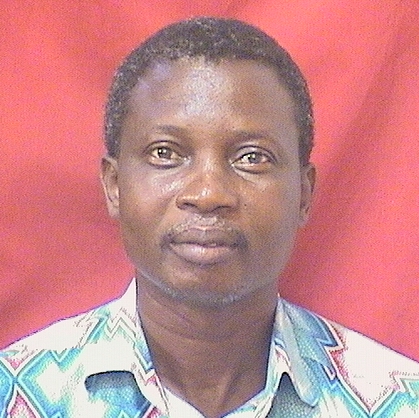Technology Development Projects of Dr. Yesuenyeagbe A.k. Fiagbe
Technology Development Projects of Dr. Yesuenyeagbe A.K. Fiagbe
Department of Mechanical Engineering, Kwame Nkrumah University of Science and Technology, Kumasi, Ghana.
Lift-tipping mechanism for small tricycle truck for Municipal waste collection.
A number of small waste collection trucks, such as tricycles, are in use in a number of developing countries. The use of such technology has been popular in Ghana. The research considered the design of a lift-tipping mechanism for small solid waste collection trucks used by Zoomlion Ghana Limited. The lift-tipping mechanism is developed from a five-bar mechanism with one degree of freedom. The mechanism is modeled and simulated using Solid Edge software as the first step. Results of the simulation show that a height of 70% of the length of the lifting bar could be attained, and a tilt angle of more than 40o could be achieved. Figure 1 illustrates the concept and the fabricated machine. The actuation of the mechanism could be achieved by employing a power screw, hydraulic or pneumatic actuators, and rack and pinion combinations. This mechanism will improve the operation of the collection truck. The system has since been built and tested in the laboratory. Weight optimization of the system was carried out. It is expected that a field test of the tricycle truck fitted with the lift-tipping mechanism will be undertaken.
Mechanized ‘Kente’ weaving loom for rural industry
‘Kente’ is a celebrated cloth in Ghana that is produced in narrow strips between 8.0 cm and 15.0 cm. The art of weaving ‘kente’ started centuries ago and has since been hand-woven. It is, as of now, produced with the same traditional loom. The process is very laborious and time-consuming, taking about 14 days for the simplest (single weave), 1.5 m by 2.4 m, and 40 days for some specific designs with experienced weavers. The aim of this research is to develop a mechanized weaving machine that is expected to enhance the ‘kente’ weaving process and promote the industry. The process involves three motions that are orthogonal and periodic. The system developed used electric motors, mechanical linkages and mechanisms, and electronic controls. The prototype is construction and being tested, figure 3. The project has won an International Innovators Award Africa 2024 and presented at Born Global Startup Festival in Leipzig, Germany on 28th May, 2024.
Fiber Tensile Testing Machine
Bast fiber research group is located in the Department of Biochemistry and Biotechnology, College of Science, KNUST. The aim is to conduct research and development of bast fiber crops in Ghana. There are a number of indigenous bast fiber species found in Ghana that require investigation, and the group has been doing so. As a professional engineer and researcher, I am supporting the research in investigating engineering properties and characterization. This lead to the development of a tensile testing machine, Tech Stress TS50 shown in figure 3.
Banana/Plantain Fiber Extraction Machine
Bananas and/or plantain plants are not only valuable for their fruit but also for their fibers, which have a wide range of applications, including in textiles, paper, and biodegradable products. The extraction of these fibers from the plant’s pseudostem (the trunk-like part) is a process that can be significantly enhanced through mechanization. The development and design of an efficient fiber extraction machine can improve productivity, reduce labor costs, and ensure consistent fiber quality. Traditionally, the extraction of banana and/or plantain fibers has been a manual process, involving labor-intensive methods that are time-consuming and yield inconsistent results. The mechanized process developed and in current use involves initially separating the pseudostem sheaths and manually inserting them into the machine one at a time. Although this seems better compared to the traditional extraction method, the process is still labor-intensive and laborious. The need for a more efficient and reliable method has driven research and innovation in the development of fiber extraction machines. The objective of this project is to develop an extraction machine that can handle the banana/plantain stem as a whole unit, eliminating the sheath separation process there by enhancing the yield.

